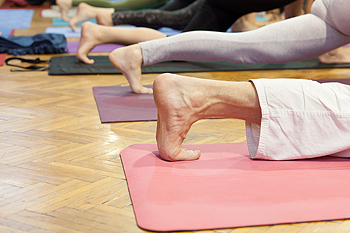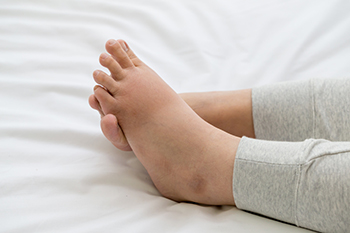
The importance of maintaining proper foot care is extremely critical for diabetic patients. Neuropathy is a common condition among this group of people. This is defined as the inability to feel existing cuts, bruises, and scrapes on the feet, as a result of nerve damage. Proper diabetic foot care can begin with washing and drying the feet thoroughly, especially between the toes. This can be followed by applying a light moisturizer, which may be helpful in preventing cracked heels. Trimming the toenails weekly is a crucial step in practicing good foot care, and a podiatrist is able to do this correctly. It is important to wear shoes that fit properly, in addition to refraining from walking barefoot. A cut that develops on the foot may become infected easier in people who are diabetic, and prompt medical care is often sought, which may help to prevent a foot ulcer from developing. If you have diabetes, it is strongly suggested that you are under the care of a podiatrist who can help you to manage this condition.
Diabetic foot care is important in preventing foot ailments such as ulcers. If you are suffering from diabetes or have any other concerns about your feet, contact one of our podiatrists from Foot & Ankle Centers of Charlotte County . Our doctors can provide the care you need to keep you pain-free and on your feet.
Diabetic Foot Care
Diabetes affects millions of people every year. The condition can damage blood vessels in many parts of the body, especially the feet. Because of this, taking care of your feet is essential if you have diabetes, and having a podiatrist help monitor your foot health is highly recommended.
The Importance of Caring for Your Feet
- Routinely inspect your feet for bruises or sores.
- Wear socks that fit your feet comfortably.
- Wear comfortable shoes that provide adequate support.
Patients with diabetes should have their doctor monitor their blood levels, as blood sugar levels play such a huge role in diabetic care. Monitoring these levels on a regular basis is highly advised.
It is always best to inform your healthcare professional of any concerns you may have regarding your feet, especially for diabetic patients. Early treatment and routine foot examinations are keys to maintaining proper health, especially because severe complications can arise if proper treatment is not applied.
If you have any questions please feel free to contact our offices located in Punta Gorda and Port Charlotte, FL . We offer the newest diagnostic and treatment technologies for all your foot and ankle needs.









